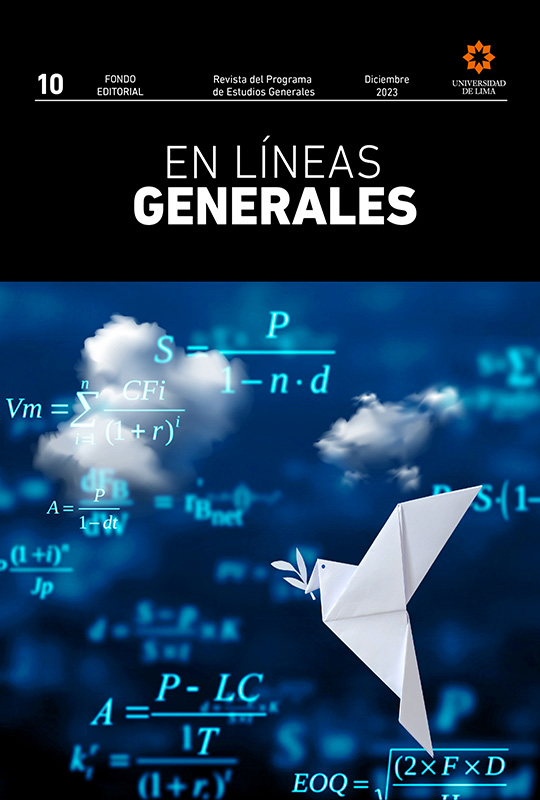Assyrian art, beauty from violence
DOI:
https://doi.org/10.26439/en.lineas.generales2023.n010.6943Keywords:
Assyria, Asurbanipal II, Nínive, LamassusAbstract
This article attempts to explain the reasons why, after traumatic acts of violence, Assyrian culture went from being a small Mesopotamian state to a militaristic empire that extended from the Iranian plateau to the Nile Valley and to avoid returning to dark times. He developed an art of sculptures and reliefs that made it clear what could happen to those who dared to confront the warriors who worshiped the god Assur.
Downloads
References
Agüera, E., & De la Cruz, M. (2021). Los relieves asirios como fuente de documentación equinotécnica. Astarté. Estudios de oriente próximo y el mediterráneo, (4), 1-11. https://journals.uco.es/index.php/astarte/article/view/13641/12529
Bagg, A. (2016). A new look at the brutality scenes in Assyrian art, en Battini, L. (Ed.) Making pictures of war: realia et imaginaria in the iconology of the Ancient Near East. Archaeopress Ancient Near Eastern Archaeology, 57-82. https://www.academia.edu/42720756/A_new_look_at_the_brutality_scenes_in_Assyrian_art
Bañón, E. (2021). La imagen del poder en las escenas de caza de los leones del arte neoasirio. Los relieves palatinos de los reyes Assurnasirpal II y Assurbanipal. Revista Eviterna, 9. https://doi.org/10.24310/Eviternare.vi9.10647
Bujanda, S. (2016). Los toros y leones androcéfalos alados en Mesopotamia: historia y significado. Tempus, 3, 5-21. https://doi.org/10.17533/udea.tempus.26573
Casero, M. (2013). 'Con tu justo cetro extiende tu tierra'. La legitimización de la guerra en Asiria a finales del segundo milenio a.C. Arys: Antigüedad, religión y sociedades, (11), 47-63. https://dialnet.unirioja.es/servlet/articulo?codigo=4952646
Córdoba, J. (2003). La comprensión de la guerra en la Asiria del siglo vii a.C. Ciencia de la guerra y eficacia de combate en un modelo de la historia militar: Ulaia, 655 a.C. En Alonso, M., Córdoba, J., Sevilla. C. y Jiménez, R. (Coords.) La guerra en oriente próximo y Egipto (39-56). Universidad Autónoma de Madrid. http://hdl.handle.net/10486/13620
Cerro, C. (2013). Gran rey, rey del mundo, rey de Asiria… ¿Rey de reyes de la tierra de Dilmun, Magan y Meluhha? ISIMU, 16, 47-62. https://doi.org/10.15366/isimu2013.16.003
Della, R. (2012). Consideraciones sobre los relieves del “árbol sagrado” asirio en el Palacio Noroeste de Assurnasirpal II (Nimrud). Antiguo Oriente: Cuadernos del Centro de Estudios de Historia del Antiguo Oriente, 10, 125-144.
Domínguez, H. (2012). El imperio neoasirio y las ciudades fenicias: una relación atípica. Antesteria, (1), 497-509. https://www.ucm.es/data/cont/docs/106-2016-03-17-Antesteria%201,%202012ISSN_495.pdf
Fugert, A., & Gries, H. (2020). “I had baked bricks glazed inlapis lazuli color” – A brief history of glazed bricks in the Ancient Near East. En Fugert & Gries (Eds.) Glazed bricks decoration in the Ancient Near East. Proceedings of a Workshop at the 11th International Congress of the Archaeology of the Ancient Near East (Munich) in April 2018. Archaeopress Archaeology, 1-15. https://www.archaeopress.com/Archaeopress/DMS/3A2CFECACD264EC79E464D22294574C0/9781789696059-sample.pdf
Martínez, F. (2021). El ritual de guerra asirio: los relieves del palacio norte de Nínive del rey Asurbanipal. Horizonte histórico, (22), 1-20. https://doi.org/10.33064/hh.vi22.3463
Pacheco, A. (2006). Una aproximación a la política del Imperio nuevo asirio. Panta Rei, 5, 95-101. http://hdl.handle.net/10201/110126
Reade, J. (1979). Ideology and propaganda in assyrian art. En Mogens Trolle, L. (Ed.) Power and propaganda: A symposium on ancient empires (329-343). Akademisk Forlag. https://faculty.uml.edu/ethan_spanier/teaching/documents/readeassyrianart.pdf
Sánchez, A. (2013). Los relieves del “palacio sin rival” de Senaquerib. ARS Revista del departamento de historia del arte y música de la Universidad del País Vasco, 3, 117-132. https://ojs.ehu.eus/index.php/ars_bilduma/article/download/4675/pdf/28885



